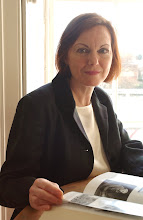 Next door in No. 43, the postwar years saw a succession of small businesses occupying the building. The British Homoeopathic Association maintained a foothold, but in the 1940s shared the building with various horsey organisations, including the National Horse Association of Great Britain, the British Show Jumping Association, and the National Pony Society. Then there was a series of rather odd tenants. General Impex, a company which, imported “first-quality Indian peacock feather…quills with eyes and peacock swords” shared the premises with a Mr Bandman, a German Jewish refugee and bespoke cabinetmaker. By 1958 No. 43 was the headquarters of Dairy Cream Products Ltd, and they were followed in quick succession by Frederick Brand & Partners, structural and civil engineers, and the Bacon Society, which was devoted to the study of Francis Bacon the renaissance philosopher rather than back or streaky! By 1964 the Educational Interchange Council had taken up residence. This was an educational charity which promoted links between schools and colleges around the world, best known for organising exchange visits for students across the Iron Curtain, hence the presence in the building in 1968 of the USSR Working Group on Youth Exchanges with the USSR.
Next door in No. 43, the postwar years saw a succession of small businesses occupying the building. The British Homoeopathic Association maintained a foothold, but in the 1940s shared the building with various horsey organisations, including the National Horse Association of Great Britain, the British Show Jumping Association, and the National Pony Society. Then there was a series of rather odd tenants. General Impex, a company which, imported “first-quality Indian peacock feather…quills with eyes and peacock swords” shared the premises with a Mr Bandman, a German Jewish refugee and bespoke cabinetmaker. By 1958 No. 43 was the headquarters of Dairy Cream Products Ltd, and they were followed in quick succession by Frederick Brand & Partners, structural and civil engineers, and the Bacon Society, which was devoted to the study of Francis Bacon the renaissance philosopher rather than back or streaky! By 1964 the Educational Interchange Council had taken up residence. This was an educational charity which promoted links between schools and colleges around the world, best known for organising exchange visits for students across the Iron Curtain, hence the presence in the building in 1968 of the USSR Working Group on Youth Exchanges with the USSR.By the early 1980s plans were advancing for the British Library to leave the Museum site, and large scale re-organisation of the main building and peripheral properties was put in hand to make best use of the additional space. At No. 43, the Educational Interchange Council had gone bankrupt in 1979, but an educational purpose was retained when the museum’s Education Service (now Learning & Audiences) moved in. The German Historical Institute moved out of No. 42 in 1982 and the building then was used as a decant space; during the conversion of 1-la Montague Street to a Ceramics Study Centre it was occupied by the Medieval and Later Antiquities Department (now Prehistory & Europe).
Finally, in 1988 the British Museum took over responsibility for managing its own maintenance and works programme, and the new department of Architectural & Building Services – the ancestor of today’s Visitor & Building Services – was set up. Nos. 42-43 were converted into the headquarters of the new service. The Education department were re-located round the corner in 38 Russell square, and Nos 42-43 were internally linked and refurbished. There has been some minor re-organisation of the rooms since then, notably the re-creating of the grand rooms on the first floor fronts of both buildings. The maintenance, estates and facilities teams still occupy the buildings in the 21st century, ensuring that day in and day out, visitors to the Museum can expect a clean, comfortable and safe environment in which to gaze in awe at some of the world’s greatest historical treasures. As the two houses which comprise 42-43 Russell Square begin their third century, it is doubtful whether many of the British Museum’s millions of visitors ever give a thought to the two houses whose staff make their visit possible, and even less likely that they know anything of the fascinating historical cavalcade of characters and organisations which have called the buildings home over the past two hundred years.
Photo shows the Great Court of the British Museum, designed by Norman Foster and Partners, opened in 2000.
